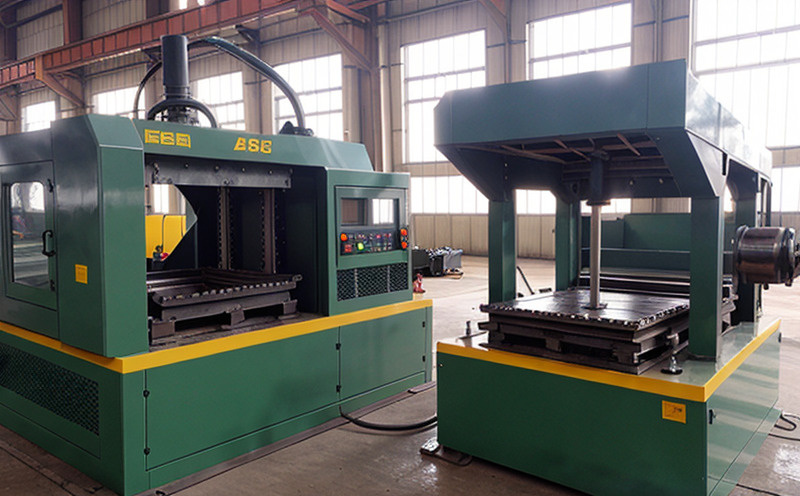ASTM E2448 Hydraulic Bulge Test of Sheet Metals
The ASTM E2448 hydraulic bulge test is a critical procedure used to determine the formability and mechanical properties of sheet metals. This test is particularly important in industries such as automotive manufacturing, aerospace, and metal fabrication, where the integrity and performance of materials are paramount.
The test involves clamping a circular specimen between two plates, one of which contains a hemispherical cavity. A hydraulic ram then applies pressure to the center of the specimen until it deforms into a dome shape. The test measures the maximum load required to produce this deformation and the resulting diameter at failure.
The ASTM E2448 standard provides detailed guidelines on the test setup, including the dimensions of the specimen and the geometry of the cavity. It also specifies the hydraulic pressure application rate and the recording of data throughout the process. Compliance with these standards ensures accurate and consistent results, which are essential for quality control and product development.
The significance of this test lies in its ability to predict how sheet metals will behave under stress during forming processes like stamping or deep drawing. By understanding the material's response to deformation, manufacturers can optimize their production processes, reduce waste, and improve product performance.
For instance, a successful ASTM E2448 test indicates that the metal has sufficient ductility to withstand the forming pressures without cracking or failing prematurely. Conversely, if the specimen does not deform as expected, it suggests potential issues with material quality or process conditions that need addressing.
The ASTM E2448 hydraulic bulge test is a valuable tool for R&D engineers and compliance officers who are responsible for ensuring that materials meet industry standards. It provides critical data that can be used to refine manufacturing techniques, improve product design, and enhance overall quality assurance processes.
Why It Matters
The ASTM E2448 hydraulic bulge test is crucial for several reasons. Firstly, it helps manufacturers assess the formability of sheet metals before committing to large-scale production runs. This allows them to identify any potential issues early in the development process, saving time and resources.
Secondly, compliance with ASTM E2448 ensures that products meet industry standards and safety regulations. In sectors like automotive and aerospace, where materials undergo extreme stresses during manufacturing, ensuring material integrity is non-negotiable. The test results provide a reliable basis for certifying the quality of sheet metals used in these applications.
Additionally, the test contributes to environmental sustainability by enabling more efficient use of raw materials. By optimizing forming processes based on ASTM E2448 data, manufacturers can reduce waste and energy consumption, contributing positively to their environmental footprint.
Quality and Reliability Assurance
- The ASTM E2448 test ensures that sheet metals are capable of withstanding the forming pressures required during manufacturing processes like stamping or deep drawing.
- It provides critical data on material properties, which can be used to refine production techniques and improve product design.
- Compliance with this standard is essential for meeting industry regulations and safety requirements in sectors such as automotive and aerospace.
- The test results enable manufacturers to optimize processes, reducing waste and improving overall efficiency.
Environmental and Sustainability Contributions
The ASTM E2448 hydraulic bulge test plays a significant role in promoting environmental sustainability by optimizing manufacturing processes. By ensuring that sheet metals can withstand the forming pressures required during production, this test helps reduce waste associated with material failure.
Manufacturers who rely on ASTM E2448 data to refine their processes are better able to minimize energy consumption and raw material usage. This not only reduces operational costs but also contributes positively to environmental sustainability goals.
The results of the test can be used to design products that perform optimally under stress, reducing the need for costly reworks or replacements. In sectors where materials are subject to extreme conditions, such as aerospace and defense, ensuring material integrity is critical not only for performance but also for safety.





